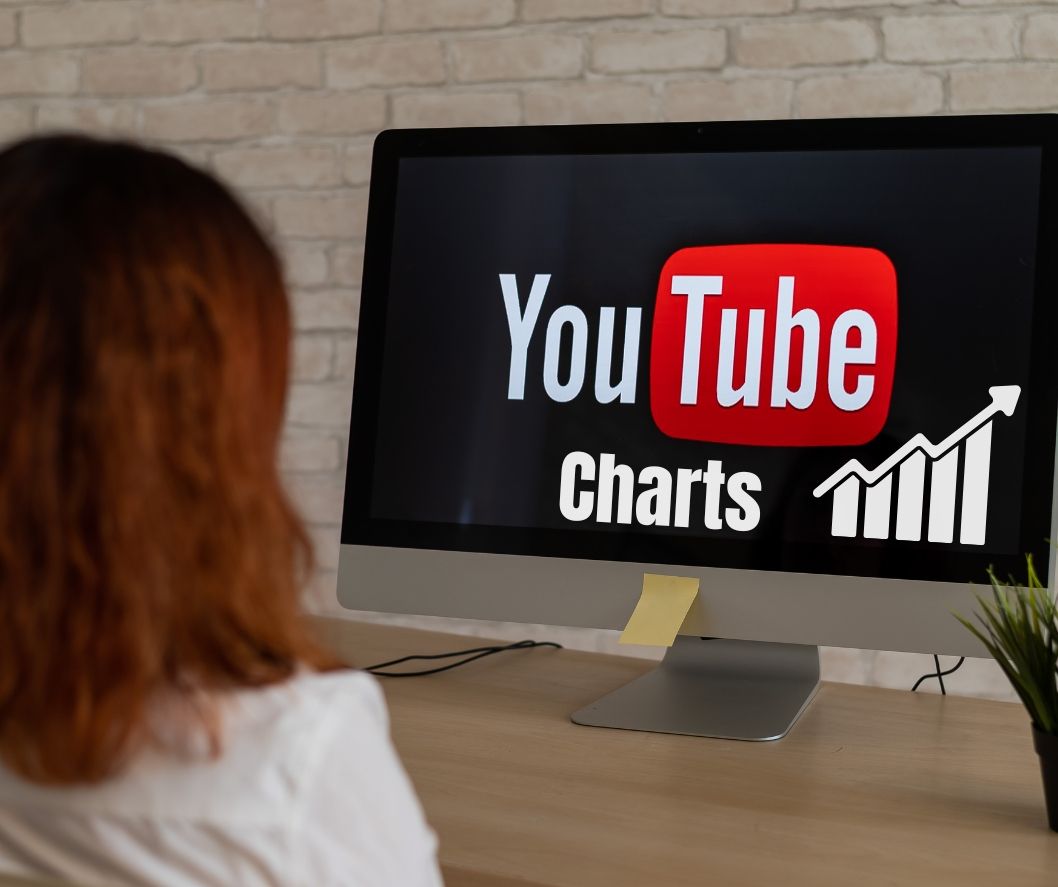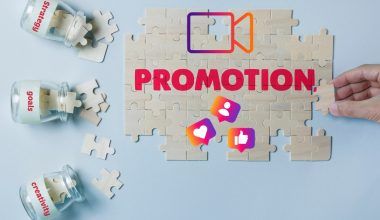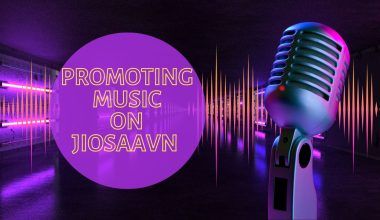In the modern digital age, music consumption has evolved dramatically. Among the many platforms that have become central to this evolution is YouTube. As one of the most popular platforms for music discovery and streaming, YouTube Charts play a crucial role in reflecting what’s trending in the music world. This blog will dive deep into what YouTube Charts are, how they work, and their significance in the music industry.
What Are YouTube Music Charts?
YouTube Charts are a collection of ranking lists that show the most popular songs, music videos, and artists on YouTube. These charts are updated regularly and provide a snapshot of what is currently trending on the platform. There are several types of charts, including:
- Top Songs: This chart lists the most popular songs on YouTube, based on the number of views.
- Top Music Videos: This chart ranks music videos by view count.
- Top Artists: This chart shows the most popular artists based on the total number of views across all their content.
How Do YouTube Music Charts Work?
YouTube Charts are generated based on various metrics that reflect the engagement and popularity of music content on the platform. Here are the primary factors that influence these charts:
- View Counts: The number of times a song or music video has been viewed.
- Engagement Metrics: Likes, shares, and comments also play a significant role.
- Region-Specific Data: Charts can be filtered by region to show what’s trending in different parts of the world.
- Time Frame: Charts can reflect data from the past week, month, or even longer periods.
Types of YouTube Charts
1. Top Songs
The Top Songs chart showcases the most popular songs on YouTube. This chart is updated weekly and ranks songs based on their total views. It’s a great way to see which tracks are gaining the most traction.
2. Top Music Videos
The Top Music Videos chart ranks music videos by their view counts. This chart highlights which music videos are being watched the most and can be a good indicator of viral trends.
3. Top Artists
The Top Artists chart shows which artists are currently the most popular on YouTube. It aggregates views from all the content an artist has uploaded, providing a comprehensive look at their overall popularity.
4. Trending
The Trending chart is updated multiple times a day and shows the hottest music videos on YouTube at the moment. This chart helps identify new and emerging trends quickly.
5. Top Tracks
The Top Tracks chart is similar to the Top Songs chart but focuses on the most popular individual tracks across various music genres.
6. Global and Regional Charts
YouTube also provides global and regional charts, allowing users to see what’s popular worldwide or in specific countries. This feature is particularly useful for artists and marketers aiming to target specific geographic audiences.
How to Get Your Music on YouTube Charts
Getting your music on YouTube Charts requires a combination of quality content, effective promotion, and audience engagement. Here are some tips to help your music climb the charts:
- High-Quality Content: Ensure your music and videos are of high quality. This includes good audio production, engaging visuals, and clear, creative concepts.
- Consistent Uploads: Regularly uploading content keeps your audience engaged and increases your chances of getting more views.
- Engagement: Encourage your audience to like, share, and comment on your videos. Engagement helps boost your content’s visibility.
- Promotion: Promote your videos across social media platforms to reach a wider audience.
- Collaborations: Collaborating with other popular YouTubers or artists can help you tap into their audience.
- SEO Optimization: Use relevant keywords in your video titles, descriptions, and tags to make your content more discoverable.
The Impact of YouTube Charts on the Music Industry
YouTube Charts have a significant impact on the music industry. They not only reflect current trends but also influence them. Here’s how:
- Exposure: Being featured on YouTube Charts can significantly increase an artist’s exposure. It puts their music in front of a larger audience.
- Influence on Other Platforms: Success on YouTube can often translate to success on other streaming platforms like Spotify and Apple Music.
- Industry Recognition: Chart performance is often used as a metric by the music industry to gauge an artist’s popularity and potential for future success.
- Fan Engagement: Charts can help increase fan engagement as listeners are more likely to interact with popular and trending content.
Benefits for Independent Artists
For independent artists, YouTube Charts can be a game-changer. Here’s why:
- Global Reach: YouTube’s vast user base means artists can reach a global audience without the need for a traditional record deal.
- Monetization: Successful videos can be monetized, providing a revenue stream for artists.
- Fan Engagement: YouTube offers tools for engaging with fans, such as live streams and community posts.
- Democratized Platform: YouTube levels the playing field, giving independent artists the same opportunity to go viral as established stars.
Challenges and Criticisms
While YouTube Charts are a valuable tool, they are not without their challenges and criticisms. Some of these include:
- Algorithm Bias: Critics argue that YouTube’s algorithm can sometimes favor certain types of content, making it harder for some artists to get noticed.
- View Fraud: Issues with fake views and engagement can distort chart rankings, though YouTube has measures in place to combat this.
- Monetization Policies: Changes in YouTube’s monetization policies can impact how artists earn revenue from their content.
- Content Saturation: With so much content being uploaded every minute, it can be difficult for new artists to stand out.
Tips for Maximizing Your Presence on YouTube Charts
To make the most of YouTube Charts, consider the following tips:
- Optimize Your Videos: Use SEO best practices, including relevant keywords in your titles, descriptions, and tags.
- Engage with Your Audience: Respond to comments, create community posts, and use live streams to build a loyal fanbase.
- Analyze Data: Use YouTube Analytics to understand what works and what doesn’t. Adjust your strategy based on this data.
- Leverage Trends: Stay updated with current trends and incorporate them into your content when appropriate.
- Cross-Promotion: Promote your YouTube content on other social media platforms to drive more traffic to your videos.
- Thumbnails and Titles: Create eye-catching thumbnails and compelling titles to attract clicks.
Case Studies of Successful Artists on YouTube Charts
1. Billie Eilish
Billie Eilish’s rise to fame is closely tied to her success on YouTube. Her unique style and visually striking music videos have garnered millions of views, propelling her to the top of YouTube Charts. Her strategy includes:
- Creative Visuals: Using innovative and captivating visuals in her music videos.
- Engaging with Fans: Regularly interacting with her audience through comments and social media.
- Consistent Content: Frequently releasing new content to keep her audience engaged.
2. BTS
The South Korean boy band BTS has used YouTube to gain international fame. Their meticulous planning and engagement strategies have made them a staple on YouTube Charts. Key strategies include:
- High-Quality Production: Investing in high-quality music videos and performances.
- Fan Engagement: Actively engaging with their fanbase, known as ARMY, through live streams and community posts.
- Social Media Integration: Promoting their YouTube content across various social media platforms to maximize reach.
The Role of YouTube Analytics
YouTube Analytics is an essential tool for understanding how your content is performing and how it can be improved. Here’s how to use it effectively:
- View Counts: Track how many views your videos are getting over time.
- Watch Time: Analyze how long viewers are watching your videos to identify engaging content.
- Engagement Metrics: Monitor likes, comments, and shares to gauge audience interaction.
- Demographics: Understand the age, gender, and location of your viewers to tailor your content to your audience.
- Traffic Sources: Identify where your views are coming from, such as search, suggested videos, or external sources.
Leveraging Collaborations and Features
Collaborations and features with other artists or influencers can significantly boost your visibility on YouTube. Here’s how:
- Identify Partners: Look for artists or influencers with a similar audience.
- Plan Collaborations: Create content that showcases both parties and appeals to both fanbases.
- Promote Collaboratively: Use both channels to promote the collaboration, maximizing reach.
- Engage Cross-Audiences: Engage with the new audience introduced through the collaboration to build lasting connections.
Understanding YouTube’s Monetization Policies
Monetization on YouTube allows artists to earn revenue from their content. Here’s what you need to know:
- Eligibility: To be eligible for monetization, you need at least 1,000 subscribers and 4,000 watch hours in the past 12 months.
- Ad Revenue: Earn money from ads displayed on your videos.
- Channel Memberships: Offer memberships to your channel for exclusive perks.
- Super Chat and Super Stickers: These features allow viewers to pay to have their messages highlighted during live streams, providing another revenue stream for artists.
- YouTube Premium Revenue: Earn a share of revenue from YouTube Premium subscribers who watch your content.
Advanced Strategies for Climbing YouTube Charts
To further enhance your presence on YouTube Charts, consider these advanced strategies:
- Optimize for Playlists: Creating and curating playlists can increase watch time and views, as viewers are more likely to watch multiple videos in a row.
- Use End Screens and Cards: Utilize end screens and cards to direct viewers to other videos or playlists, keeping them engaged with your content.
- Collaborate with Influencers: Partnering with YouTube influencers can give your music exposure to a broader audience.
- Engage in Trend Jacking: Align your content with trending topics and events to capture more views.
- Conduct Contests and Giveaways: Engage your audience with contests and giveaways that encourage sharing and interaction with your videos.
The Importance of Consistent Branding
Consistent branding helps build a recognizable image that fans can easily identify. Here’s how to maintain consistency:
- Visuals: Use consistent themes, colors, and fonts across your videos and channel.
- Messaging: Maintain a consistent tone and style in your video content and descriptions.
- Profile and Banner Images: Use professional and consistent images for your profile picture and banner.
- Social Media Links: Ensure all social media links are up to date and consistent across platforms.
Case Studies: Rising Stars Using YouTube Charts Effectively
1. Lil Nas X
Lil Nas X’s breakout hit “Old Town Road” is a prime example of leveraging YouTube for viral success. Key strategies he used include:
- Memes and Virality: Creating a music video that capitalized on internet memes and trends.
- Engaging Thumbnails: Using eye-catching thumbnails to attract clicks.
- Fan Interaction: Encouraging fan-made content, which helped spread his music organically.
2. Doja Cat
Doja Cat’s strategic use of YouTube has also contributed to her rise. Her approach includes:
- Viral Challenges: Starting or participating in viral challenges that encourage user-generated content.
- Creative Content: Producing visually appealing and creative music videos that stand out.
- Consistent Releases: Keeping a steady flow of new content to maintain audience interest.
Utilizing YouTube Live
YouTube Live can be a powerful tool for engaging with your audience in real-time. Here’s how to make the most of it:
- Live Performances: Host live performances or concerts to connect with fans.
- Q&A Sessions: Hold Q&A sessions to answer fan questions and build a stronger connection.
- Behind-the-Scenes: Share behind-the-scenes looks at your creative process or daily life.
- Exclusive Releases: Premiere new songs or videos during live streams to create buzz and excitement.
Understanding YouTube’s Algorithm
The YouTube algorithm plays a crucial role in determining which videos get recommended to users. Here’s how to work with the algorithm:
- Click-Through Rate (CTR): Optimize your thumbnails and titles to increase CTR.
- Watch Time: Create engaging content that keeps viewers watching longer.
- Engagement: Encourage likes, comments, and shares to boost engagement metrics.
- Consistency: Regularly upload content to stay active and relevant in the algorithm’s eyes.
The Role of Metadata
Metadata includes your video’s title, description, tags, and thumbnails. Here’s how to optimize it:
- Title: Use clear, concise, and keyword-rich titles.
- Description: Write detailed descriptions with relevant keywords and links.
- Tags: Use a mix of broad and specific tags to help YouTube understand your content.
- Thumbnails: Design custom thumbnails that are visually appealing and relevant to the content.
Tools and Resources for Enhancing YouTube Presence
Several tools and resources can help you optimize your YouTube strategy:
- TubeBuddy: A browser extension that provides various tools for video optimization, keyword research, and analytics.
- VidIQ: Another browser extension that helps with keyword research, video optimization, and competitor analysis.
- Canva: A design tool for creating custom thumbnails and channel art.
- YouTube Studio: YouTube’s built-in analytics and management tool for monitoring your channel’s performance.
The Importance of Networking and Community
Building a network within the YouTube community can provide support and opportunities for growth. Here’s how to do it:
- Comment and Engage: Actively comment on other videos and engage with creators in your niche.
- Join YouTube Groups: Participate in YouTube groups and forums to connect with other creators.
- Collaborate: Work on projects with other YouTubers to reach new audiences.
- Attend Events: Participate in YouTube-related events and conferences to network in person.
Future Trends in YouTube Music Charts
Staying ahead of trends can give you a competitive edge. Here are some future trends to watch:
- Short-Form Content: With the rise of platforms like TikTok, short-form content is becoming increasingly popular on YouTube as well.
- Virtual Reality (VR): VR content is expected to grow, offering immersive experiences for viewers.
- Interactive Videos: Videos that allow viewers to interact and make choices are gaining traction.
- AI and Personalization: Advances in AI will continue to enhance personalization and recommendations.
Conclusion
YouTube Charts are an essential tool for understanding and navigating the music landscape on YouTube. Whether you are an established artist or just starting, getting your music on these charts can significantly boost your visibility and success. By focusing on quality content, consistent engagement, and smart promotion, you can make the most of what YouTube Charts have to offer.
Additional Resources
- YouTube Creator Academy: Learn more about how to create engaging content and grow your channel.
- Google Trends: Use this tool to find out what’s trending and tailor your content accordingly.
- Social Media Examiner: Offers tips and strategies for leveraging social media, including YouTube, to grow your audience.
FAQs About YouTube Charts
Q1: How often are YouTube Charts updated? A1: YouTube Charts are updated regularly, with some charts like the Trending chart being updated multiple times a day.
Q2: Can independent artists get on YouTube Charts? A2: Yes, independent artists can get on YouTube Charts by creating high-quality content and effectively promoting it.
Q3: What is the difference between the Top Songs and Top Music Videos charts? A3: The Top Songs chart ranks the most popular songs based on views, while the Top Music Videos chart ranks music videos by their view counts.
Q4: How does engagement affect YouTube Charts? A4: Engagement metrics such as likes, shares, and comments significantly impact chart rankings, as they indicate viewer interest and interaction.
Q5: Are YouTube Charts the same worldwide? A5: No, YouTube Charts can be filtered by region to show what’s popular in different parts of the world.
Final Thoughts
Navigating YouTube Charts can be a powerful way to grow your music career. By understanding how these charts work and utilizing the strategies discussed, you can increase your visibility, engage with a global audience, and ultimately, achieve greater success as an artist. Stay consistent, be creative, and keep engaging with your audience to climb the ranks of YouTube Charts.
For further reading, explore these related articles:
For additional resources on music marketing and distribution, visit Deliver My Tune.






